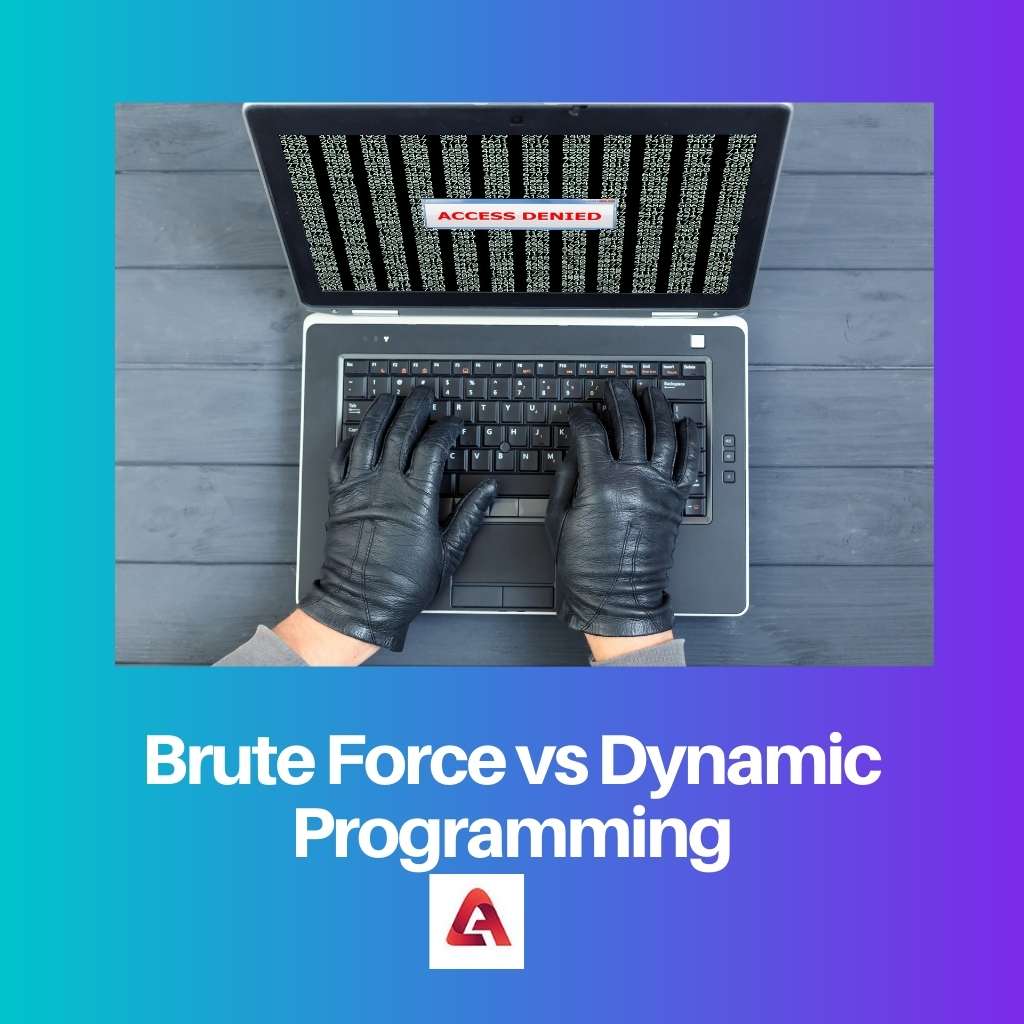There are a lot of problems that come across in our daily life. Similarly, there are a lot of problems in the field of programming.
There are a lot of methods to solve a particular problem related to algorithms and programming. Both Brute force and Dynamic Programming are types of techniques to solve a problem and find a solution.
Key Takeaways
- Brute force algorithms exhaustively search all possible solutions, while dynamic programming breaks problems into smaller overlapping subproblems and stores solutions for reuse.
- Dynamic programming offers improved efficiency and reduced computational complexity compared to brute force approaches.
- Brute force methods are easier to implement, while dynamic programming requires a deeper understanding of the problem to identify the optimal substructure and overlapping subproblems.
Brute Force vs Dynamic Programming
The difference between Brute Force and Dynamic Programming is efficiency. Both the techniques have their efficiency. The brute force method iterates over the given data set many times hence leading to poor efficiency, whereas the Dynamic Programming method iterates on the data set only once hence leading to good efficiency. But yes, both methods are useful in different situations.

The Brute Force approach finds all the possible solutions related to a given problem until it finds a satisfactory solution. It is always the easiest way to implement and guarantee a solution if it exists.
This nature of the Brute force technique leads to slow down its working. The Brute force approach is always the simplest approach to get a solution.
Dynamic Programming is an optimized version of solving a problem in a lesser amount of time and with less effort. It is the optimization of recursion because, in recursion, we keep solving the same set of input many times, whereas, by Dynamic programming, we only solve unsolved cases of the given problem.
Comparison Table
| Parameters of Comparison | Brute Force | Dynamic Programming |
|---|---|---|
| Methodology | It finds all the possible solutions to a given problem. | It finds only one optimal solution. |
| Time Complexity | O(mn), where m is the number of char to be found and n is the size of the input. | O(n), where n is the number of unique subproblems |
| Example | Selection sort | Floyd Warshell |
| Iterations | The number of iterations is more | The number of iterations is less |
| Efficiency | Less efficient | More efficient |
What is Brute Force?
In the field of computer science, Brute Force is a popular technique to find a solution. The Brute Force method guarantees a solution for a given problem, but it takes a lot of time to run and is inefficient.
It starts by systematically enumerating all the cases and checking whether they satisfy the condition or not.
If we take an example of sorting the elements of an array, then by the Brute force approach, we will traverse the array a lot of times until we get the desired solution. This will lead to wastage of time.
This is the reason why it is called time-consuming.
The Brute Force technique is used when the data set is limited because it will lead to a lot of complications if we apply a lot of computations many numbers times on huge amounts of data. Whenever a new problem is originated whose appropriate solution is not known, then the Brute Force technique is used as a baseline method.
The major disadvantage of Brute Force for solving real-world problems is that it increases the number of cases to be checked. For example, if we want to find a divisor of a number, and let’s say its divisor is 16, then brute force will perform 10^15 computations to find the solution.
What is Dynamic Programming?
Dynamic Programming is an optimized method to solve mathematical as well as computer science problems. It was developed by Richard Bellman in the 1950s.
Today it has applications in various fields because of its optimization power.
It solves a complex problem by breaking it into simpler sub-problems in a recursive way. Then each subproblem is solved recursively.
The main point is that if a subcase “a” occurs 4 times in a complex problem, then Dynamic Programming will solve it only one time, whereas recursion will solve it 4 times.
This is the reason why Dynamic Programming is preferred. In the case of mathematics, dynamic programming refers to simplifying a decision by breaking it down into subproblems.
In the case of computer science, we have two important terms where we apply dynamic programming, first is optimal substructure another is overlapping sub-problem.
Optimal substructure means the solution of the optimization problem is obtained by combining an optimized solution of all the sub-problems. Overlapping subproblems means the space of sub-problems must be small.
It also has cons, like every coin has two sides. As we know, it stores the intermediate result while solving the sub-problem, which leads to a lot of usage of memory.
Main Differences Between Brute Force and Dynamic Programming
- The Brute Force approach solves the problem by iterating over the data set a large number of times. Whereas Dynamic Programming only iterates once and give optimal solution.
- The solution which is provided by Brute Force is not guaranteed to be optimal because it provides all the possible solutions. Whereas the solution provided by Dynamic Programming will always be optimal.
- The Brute Force method solves by considering all the data set at a time, whereas Dynamic Programming solves a problem by dividing the given problem into several subproblems.
- The brute force approach does not use the concept of optimal substructure and overlapping subproblems. Dynamic programming uses these concepts.
- The brute force method is not optimal and efficient. It solves the same computation several times, whereas Dynamin programming is optimal and efficient because it solves one computation only once and uses memoization.
- https://www.science.org/doi/abs/10.1126/science.153.3731.34
- https://dl.acm.org/doi/fullHtml/10.1145/3107239
